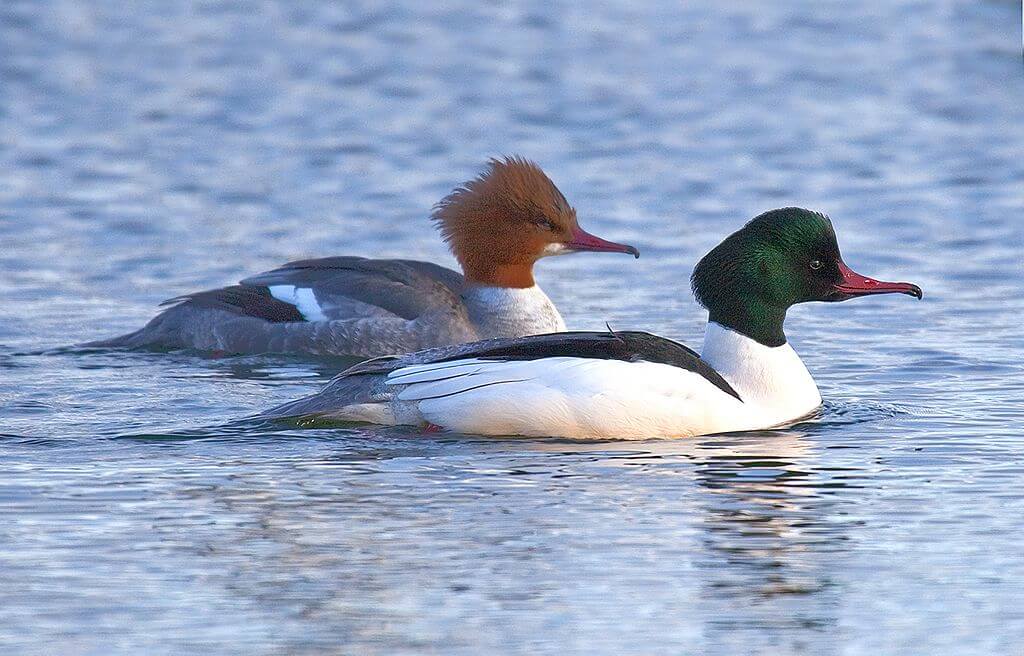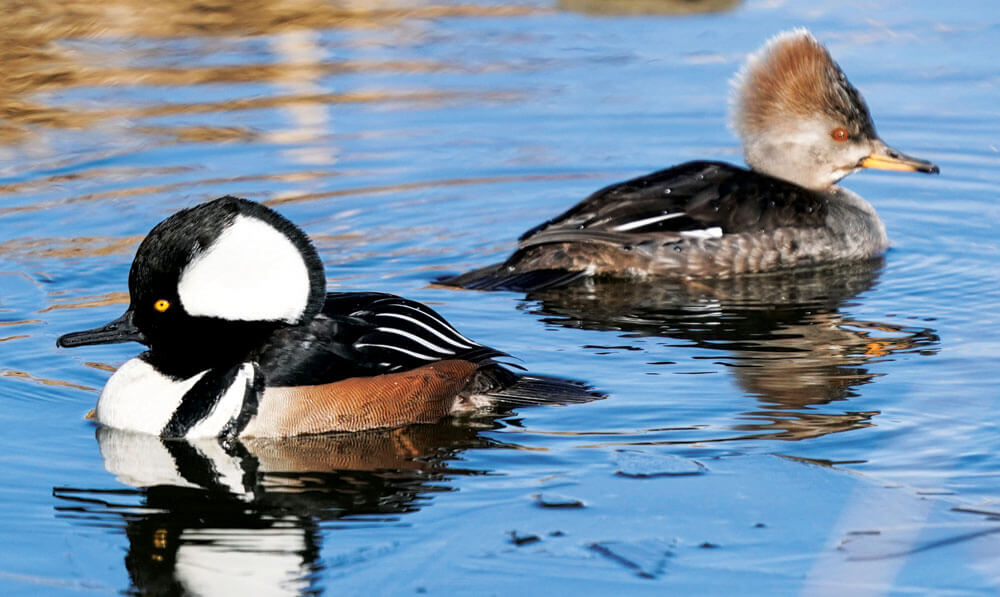7 Types of Mergansers You Should Know
Common Name |
Scientific Name |
Range |
Key Features |
Mergus merganser |
North America, Europe, Asia |
Large duck, greenish-black head (male), serrated red bill, dives for fish. |
|
Mergus serrator |
North America, Europe, Asia |
Slender body, spiky crest on male, reddish breast, expert fish hunter. |
|
Mergus squamatus |
Eastern Russia, China, Korea |
Rare, black-and-white scaled pattern on flanks, endangered, shy. |
|
Mergus octosetaceus |
Eastern Brazil |
Smallest merganser, endangered, chestnut head (male), freshwater rivers. |
|
Lophodytes cucullatus |
North America |
Small, crest on head that can fan open, black-and-white male pattern, dives for fish. |
|
Mergellus albellus |
Northern Europe, Asia |
Tiny merganser, striking black-and-white male plumage, dives in rivers/lakes. |
|
Auckland Island Merganser (Extinct)  |
Mergus australis |
Auckland Islands, New Zealand |
Extinct; dark body, red bill, known only from 19th-century records. |
Mergansers: The Sawbill Ducks
Mergansers are a group of ducks in the subfamily Merginae, commonly known as “sawbill ducks” because of the serrated edges along their bills. These special bills help them catch and hold slippery prey like fish, making them expert divers. Most mergansers are found in freshwater lakes and rivers across North America, Europe, and Asia, though a few species inhabit South America. Their streamlined bodies, strong swimming abilities, and diving behavior make them well adapted to a fish-based diet.
The Smew (Mergellus albellus) is included in merganser lists even though it belongs to a separate genus, Mergellus. It shares key characteristics with true mergansers, including a serrated bill, diving habits, and a similar body shape. Its behavior and ecological niche make it a close relative, justifying its inclusion when discussing sawbill ducks.
Among mergansers, one species is notable for being extinct: the Auckland Island Merganser (Mergus australis). Native to New Zealand’s Auckland Islands, this dark-bodied duck with a red bill was last recorded in the 19th century. Its disappearance highlights the fragility of island waterfowl populations, particularly in the face of human impact and introduced predators.






